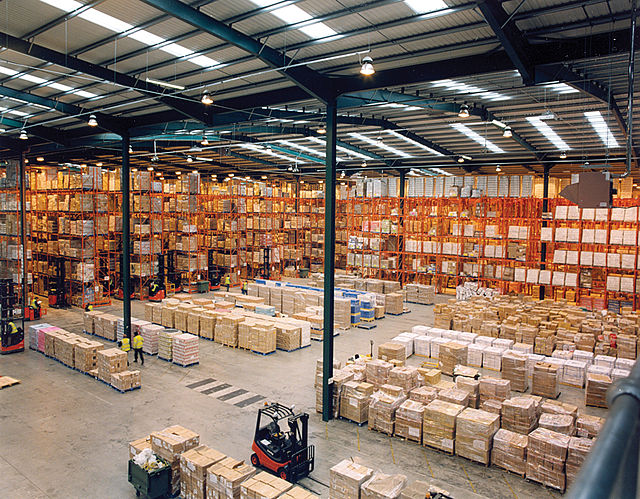
The ultimate guide to fostering safety culture in the manufacturing warehouse
by Emily Newton, Editor-in-Chief, Revolutionized
Automation is becoming an ever-increasing presence on the warehouse floor, so it makes sense that mechanized solutions promote workplace safety.

Modern Warehouse Wikimedia Commons
Accidents in manufacturing warehouses are common, and many compromise workers and machines. Here’s how to create a positive safety culture in the warehouse. Fostering a culture of safety in a warehouse ensures workers can remain on the job and improves employee morale. It also prevents profit loss from delays and setbacks due to injuries and machine failures.
Here are some ways to foster a culture of safety in a warehouse.
- Clearly Communicate Expectations
Instilling a culture of safety starts on workers’ first day. Training can help employees recognize potential hazards, understand their role in the organization’s safety culture, and know how to report unsafe or hazardous conditions.
During training, warehouse leadership should clearly communicate all safety expectations. To achieve employee buy-in more quickly, consider personalizing safety content to the specific warehouse environment with relevant examples.
- Set an Example
Leaders are the backbone of a positive safety culture. If they don’t take safety seriously, how can employees be expected to do so? Reinforce that leadership should heed all warnings and rules, such as wearing the correct PPE whenever they are on the floor, even if only for a few moments.
- Showcase Positive Safety Values
Most people respond better to positive reinforcement than they do to negative consequences. Punishments for unsafe working behaviour may only make workers seek to hide their negligent practices. Showcasing positive safety values means listening to employees and being understanding in the event of a safety oversight.
Additionally, rather than providing workers with a list of “don’ts,” create one using positive language that details the desired behaviour. For example, it’s more effective to advise workers to watch their step rather than telling them not to slip and fall.
It’s also important to congratulate workers for meeting safety goals. Set challenges, such as one month without an incident, and motivate them to keep up their good work with exciting rewards.
- Promote Top-Down Accountability
If the warehouse recognizes unsafe work practices or hazardous conditions, begin with acknowledging the leadership’s role in amending them. Recognize ways managers can support workers to overcome obstacles to safety.
Ensuring workers are accountable for their actions is important, but promoting a top-down approach to safety culture accountability will create a more positive work environment for all.
- Review and Reflect
The practice and realization of a safety culture is largely in the hands of warehouse workers, but leadership must review and reflect on their policies. Dedicate time to examining past safety incidents and identifying actions that can prevent future occurrences. These might include changes to training, requirements of recertification for machine operators, and even alterations in scheduling and staffing.
Data-Driven Solutions to Safety
Automation is becoming an ever-increasing presence on the warehouse floor, so it makes sense that mechanized solutions promote workplace safety. According to a Harvard Business Review survey, 42% of workers view automation positively for its impact on staying safe.
For example, an automated forklift can significantly reduce wear and tear on workers’ bodies from constant operations, and mechanical cleaning robots can operate overnight to ensure clean facilities for workers.
Start Building a Positive Safety Culture in the Warehouse Today
A safety culture involves prioritizing worker safety and welfare through initiatives that start at the very top of an organization. Rather than relying on workers to enforce safety regulations, the organization infuses its commitment to safety in everything it does. It also encourages employees to participate by providing feedback and communicating with leadership.
Workers must feel safe and protected while on the warehouse floor. Implementing practices that focus on leadership accountability and positive goal-setting are the best ways to ensure a secure workplace.